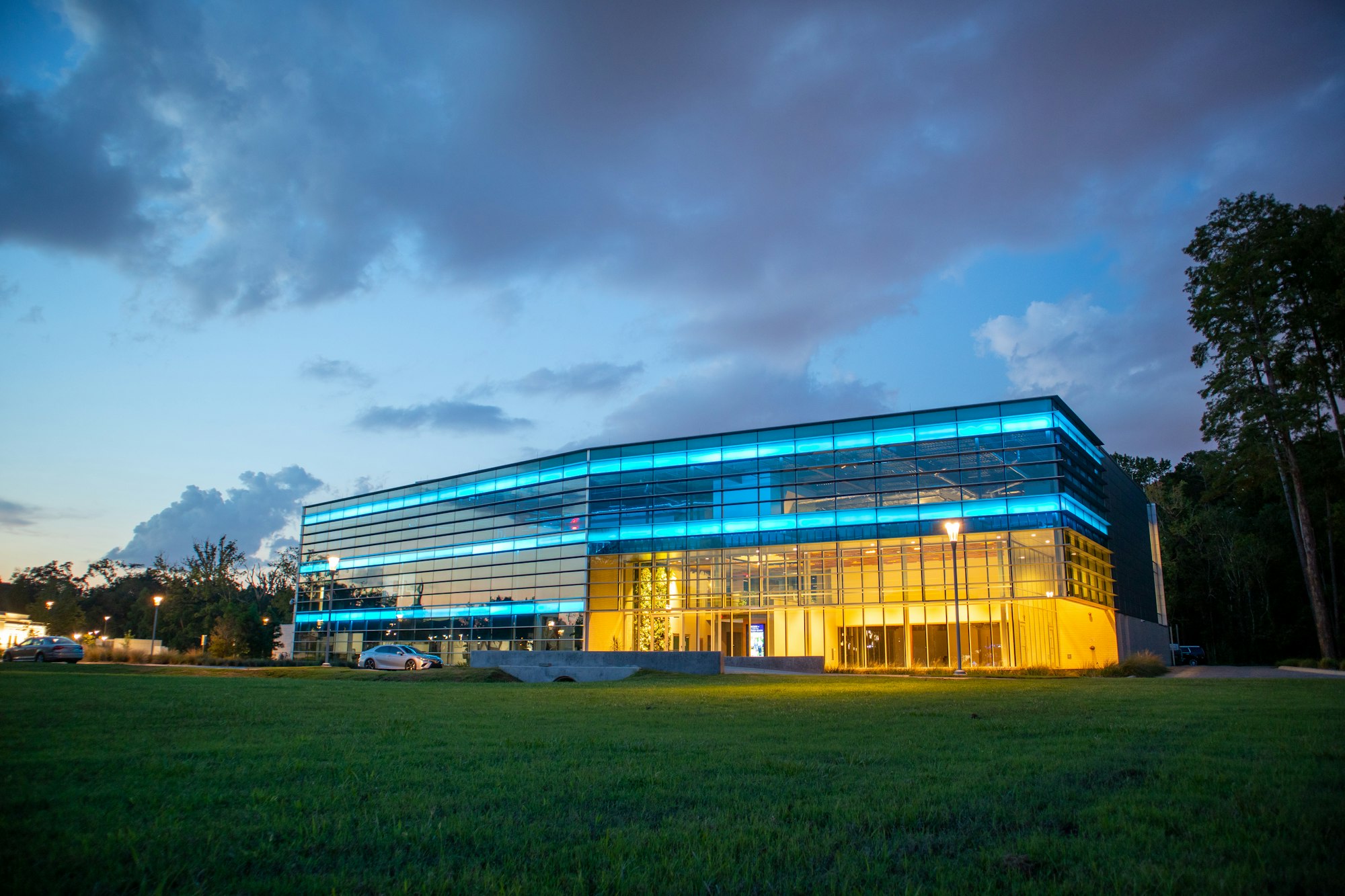The Sensor City: How Smart Devices Are Transforming Urban Life—and What It Costs Privacy

iFrom intelligent street lights that monitor everything from air quality to pedestrian traffic, to AI-powered surveillance systems that can identify faces in crowds, cities worldwide are deploying an unprecedented network of connected devices. But as urban centers become smarter, citizens are asking: at what cost to our privacy?
In Amsterdam, a seemingly ordinary street lamp on a quiet residential block conceals an extraordinary array of technology. Hidden within its sleek LED housing are environmental sensors monitoring air quality and seismic activity, cameras equipped with facial recognition software, speakers capable of broadcasting emergency announcements, and wireless mesh networking equipment that connects it to thousands of similar devices across the city. This single pole represents a node in what city planners call a "smart city"—an urban environment where digital sensors and artificial intelligence monitor, analyze, and respond to virtually every aspect of city life.

The transformation is happening globally. By 2025, it's predicted there will be 41.6 billion connected IoT devices worldwide, generating 79.4 zettabytes of data. Cities are racing to deploy these systems, driven by promises of improved efficiency, sustainability, and quality of life. But recent incidents—from major data breaches affecting coronavirus tracking programs to concerns about mass surveillance—are forcing difficult questions about the trade-offs between smart city benefits and fundamental privacy rights.
The Infrastructure of Surveillance
Smart Street Lighting: The Backbone of Digital Cities
The modern smart street light represents the evolution of urban infrastructure from simple service delivery to comprehensive data collection platforms. These devices have expanded far beyond their original illumination function to become what urban planners call "smart poles"—multi-purpose platforms hosting an array of sensors and communication equipment.
A typical smart street light now includes LED bulbs with photocell control for automatic dimming, motion sensors for adaptive lighting, environmental sensors monitoring air quality and weather conditions, image sensors with pedestrian counting capabilities, digital signage for wayfinding and emergency notifications, speakers for announcements and emergency communications, wireless mesh transceivers for city-wide networking, and charging stations for electric vehicles and mobile devices.

Cities like San Diego have installed sensor-laden smart streetlights that direct drivers to vacant parking spaces and alert traffic enforcement officers to illegally parked cars. These systems can determine which intersections are most dangerous and need redesigning, adjust traffic signals by monitoring traffic patterns, and detect sounds such as gunshots or accidents. Los Angeles received revenue boosts from SmartPoles offering LTE reception while saving energy, while Chicago projects saving $10 million annually in energy costs through a four-year initiative replacing 270,000 city lights with LED and intelligent controls.
The scale is staggering. San Leandro, California, created a 4,800-node mesh network through its streetlight infrastructure, positioning IP cameras at various intersections and enabling comprehensive traffic and pedestrian monitoring across the city.
Environmental Monitoring Networks
Cities are deploying extensive sensor networks to monitor environmental conditions in real-time. These systems include air quality sensors measuring pollutants like NO₂, SO₂, particulate matter, and ozone levels; water quality monitors in supply systems detecting contamination and chemical changes; noise pollution sensors tracking decibel levels and sound patterns; weather stations monitoring temperature, humidity, wind speed, and precipitation; and seismic sensors for earthquake detection and structural monitoring.
In Alba Iulia, Romania, an innovative IoT project placed sensors on buses to monitor air quality as they traverse the city, providing a dynamic view of urban pollution levels. Copenhagen has deployed smart grids to reduce carbon emissions from heating systems, integrating energy infrastructures that include electric transport and energy-efficient buildings.

Traffic and Transportation Intelligence
Smart cities employ sophisticated traffic management systems utilizing networks of sensors, cameras, and connected devices. These include embedded road sensors counting vehicles and measuring speed; intersection cameras with AI-powered traffic analysis; adaptive traffic signals responding to real-time conditions; connected vehicle systems sharing data between cars and infrastructure; and public transit tracking enabling real-time passenger information.
London's transport operators use IoT technology to forecast train passenger loads, unifying data from CCTV cameras, sensors, and ticket sales to predict occupancy levels. When trains arrive at stations, operators can encourage passengers to distribute across cars for optimal capacity utilization.
Public Safety and Security Systems
The public safety infrastructure in smart cities has evolved into comprehensive surveillance and response networks. These systems feature CCTV cameras with facial recognition and behavior analysis; gunshot detection sensors that can triangulate the source of firearms discharge; emergency call stations with push-to-talk functionality; crowd monitoring systems tracking density and movement patterns; and automated threat detection algorithms analyzing video feeds for suspicious activity.
In California's Chula Vista, police department drones can cover about one-third of the city from two launch sites, responding to roughly 70% of all emergency calls. The department hopes to expand coverage to the entire city through additional launch sites.
Waste Management Optimization
Smart waste management systems represent one of the more practical applications of IoT in cities. These include sensors in garbage bins monitoring fill levels; route optimization algorithms reducing collection trips; solar-powered compacting systems increasing bin capacity; recycling tracking monitoring contamination and efficiency; and fleet management systems coordinating collection vehicles.
San Francisco has deployed smart garbage cans with solar-powered compaction, demonstrating how technology can lead to more efficient waste management processes while reducing unnecessary collections and associated emissions.
The Data Ecosystem
Collection and Processing
The volume of data generated by smart city systems is unprecedented. Modern cities collect information including location data from mobile devices and connected vehicles; behavioral patterns from surveillance systems and app usage; environmental readings from thousands of sensors; utility consumption from smart meters; and transaction data from digital payment systems.
Singapore, often considered the gold standard of smart cities, uses sensors and IoT-enabled cameras to monitor public space cleanliness, crowd density, and locally registered vehicle movement. The city-state helps companies and residents monitor energy use, waste production, and water usage in real-time.
Communication Networks
Smart cities rely on robust communication infrastructure to connect millions of devices. Technologies include 5G networks providing low-latency, high-bandwidth connectivity; Wi-SUN mesh networking enabling scalable connection of hundreds of thousands of devices; LoRaWAN for long-range, low-power applications; NB-IoT utilizing existing cellular infrastructure; and fiber optic networks providing backbone connectivity.
The advent of 5G technology is expected to be a watershed moment that propels smart city technology into the mainstream, enabling more sensors and greater amounts of collected data while supporting advanced applications like autonomous vehicles and real-time AI processing.
Cloud and Edge Computing
Processing the massive data flows from smart cities requires sophisticated computing infrastructure. This includes cloud platforms for data storage and analysis; edge computing for real-time local processing; artificial intelligence for pattern recognition and prediction; digital twins creating virtual city models; and analytics dashboards for city management and citizen services.
Palo Alto has created a digital twin analyzing 120 intersections for vehicle and pedestrian traffic in real-time, visualizing traffic lights, foot traffic, and other factors to identify chokepoints and safety issues while monitoring CO₂ levels and other environmental data.
Privacy in the Crosshairs
The Scope of Surveillance
The privacy implications of smart city technologies are profound and far-reaching. Modern smart cities monitor citizens' movements through location tracking and facial recognition; behavioral patterns through purchase histories and app usage; social interactions through communication metadata and proximity tracking; and personal preferences through service usage and consumption patterns.
The International Telecommunication Union identified data protection and privacy as one of the greatest obstacles to implementing developing technologies in smart cities. Citizens often lack awareness of how data is collected, used, and secured in urban environments, creating a significant gap between technological capability and public understanding.
Real-World Privacy Failures
The Dutch coronavirus track-and-trace program mentioned in news reports represents one of many documented privacy breaches in smart city systems. These incidents highlight the vulnerability of centralized data systems and the potential for misuse of personal information collected through urban sensors and applications.
Other documented concerns include facial recognition systems with racial bias leading to wrongful identifications; data breaches exposing personal movement patterns and behavioral profiles; unauthorized data sharing between government agencies and private companies; and surveillance systems being used for purposes beyond their original scope.
The Chilling Effect
Privacy advocates warn about the "chilling effect" of pervasive surveillance on civic life. When citizens know they're being monitored, they may alter their behavior, avoid certain areas, self-censor their expressions, and limit their political participation. This creates what researchers call "digital displacement," where the benefits of technology come at the cost of fundamental democratic freedoms.
The potential for "social sorting" through automated categorization of citizens based on behavior patterns raises concerns about discrimination and the creation of digital divides within cities.

Technical and Security Challenges
Cybersecurity Vulnerabilities
Smart cities create vast attack surfaces for cybersecurity threats. Connected infrastructure systems are vulnerable to hacking attempts that could disrupt critical services; data transmission channels can be intercepted without proper encryption; centralized control systems represent single points of failure; and IoT devices often lack adequate security measures.
The interconnected nature of smart city infrastructures amplifies the impact of security incidents, potentially affecting public safety and essential services. A security breach in one system can cascade through connected networks, compromising multiple city functions simultaneously.
System Reliability
The complexity of smart city systems raises concerns about reliability and failure modes. Software bugs can cause catastrophic system failures, as demonstrated by incidents like the 2003 Northeast blackout caused by alarm system software issues. When cities become dependent on automated systems, they may lose the human expertise needed to operate manually during failures.
Environmental factors including weather conditions and natural disasters can cause unexpected damage to equipment, while resource allocation challenges ensure adequate personnel and equipment are available for maintenance tasks. The integration of smart technology with aging infrastructure creates additional complexity and potential failure points.
Interoperability Issues
Many smart city deployments suffer from the "silo problem," where different systems cannot communicate or share data effectively. Proprietary technologies lock cities into single vendors, while incompatible standards prevent integration between systems. This fragmentation limits the potential benefits of smart city investments and creates operational inefficiencies.
The lack of standardization means cities struggle to extend smart city projects beyond single-use IoT instances, limiting the return on investment and preventing the development of truly integrated urban systems.
Global Implementation and Lessons
Leading Smart Cities
Several cities worldwide are recognized as leaders in smart city implementation:
Singapore stands out for its comprehensive approach, using AI-powered systems for traffic management, environmental monitoring, and public safety while maintaining strict data governance frameworks.
Barcelona, Spain has implemented smart water management systems, intelligent transportation networks, and participatory governance platforms that engage citizens in city planning decisions.
Toronto, Canada attempted one of the most ambitious smart city projects through Sidewalk Labs but ultimately scaled back due to privacy concerns and citizen resistance, offering lessons about the importance of public engagement.
Amsterdam, Netherlands has deployed extensive sensor networks while developing privacy-by-design principles and citizen data rights frameworks.
Implementation Challenges
Cities face significant challenges when implementing smart city technologies. Financial constraints limit the scope of deployments, with only about 16% of cities able to self-fund infrastructure projects. Public-private partnerships often involve complex arrangements where cities serve as implementers while private companies act as investors, potentially creating conflicts between public interest and commercial objectives.
Technical integration challenges arise from the need to connect new systems with existing infrastructure. Legacy systems may not be compatible with modern IoT devices, requiring expensive upgrades or workarounds that limit functionality.
Public acceptance remains a critical factor. Citizens must trust that their data will be protected and used appropriately, requiring transparent communication and robust governance frameworks.

Economic and Social Implications
Cost-Benefit Analysis
The economics of smart cities involve substantial upfront investments offset by long-term operational savings. LED lighting alone can reduce energy consumption by up to 70% compared to traditional luminaires, while predictive maintenance can reduce operational costs by identifying issues before they cause failures.
Smart traffic management systems can reduce congestion and emissions, providing environmental benefits alongside improved mobility. Waste management optimization can reduce collection costs while improving service quality.
However, the higher upfront costs of implementing smart systems compared to traditional infrastructure can be prohibitive for many cities, particularly those with limited budgets or borrowing capacity.
Social Equity Concerns
Smart city technologies can exacerbate existing inequalities if not carefully implemented. Digital divides may leave some populations without access to smart city services, while algorithmic bias in AI systems can discriminate against certain groups.
The benefits of smart cities may accrue primarily to affluent areas that can afford advanced infrastructure, while low-income neighborhoods may be excluded from improvements or subjected to increased surveillance without corresponding benefits.
Governance and Regulation
Regulatory Frameworks
The European Union's General Data Protection Regulation (GDPR) has restricted the use of facial recognition in smart cities, establishing important precedents for privacy protection. Similar regulations are being developed worldwide as governments grapple with the implications of ubiquitous urban surveillance.
The U.S. Cybersecurity and Infrastructure Security Agency (CISA) has published "Cybersecurity Best Practices for Smart Cities," providing guidance on securing IoT devices and managing third-party supply chain risks.
However, regulatory frameworks often lag behind technological development, leaving gaps in protection that can be exploited by bad actors or misused by authorities.
Privacy-by-Design Approaches
Some cities are adopting "privacy-by-design" principles that build data protection into smart city systems from the ground up. These approaches include data minimization, collecting only information necessary for specific purposes; purpose limitation, using data only for stated objectives; anonymization and pseudonymization to protect individual identities; user consent and control mechanisms; and regular audits and transparency reporting.
Cities like Amsterdam have developed citizen data rights frameworks that give residents control over how their information is collected and used, while Toronto's failed Sidewalk Labs project demonstrated the importance of early public engagement in smart city planning.
The Path Forward
Balancing Innovation and Privacy
The future of smart cities depends on finding the right balance between technological innovation and privacy protection. This requires technical solutions including improved encryption and security measures; anonymization technologies that protect individual privacy while enabling useful analysis; decentralized architectures that reduce single points of failure; and open standards that prevent vendor lock-in and enable interoperability.
Legal and governance frameworks must evolve to address smart city challenges, including comprehensive privacy legislation that covers IoT devices and urban sensors; oversight mechanisms that ensure systems are used appropriately; public participation in planning and implementation; and international cooperation on standards and best practices.

Citizen Engagement
Successful smart cities require active citizen participation in planning, implementation, and governance. This includes public education about smart city technologies and their implications; participatory design processes that involve residents in system development; regular feedback mechanisms that allow citizens to report problems and suggest improvements; and transparent governance that provides visibility into how systems operate and how data is used.
Cities that fail to engage their citizens risk repeating the mistakes of Toronto's Sidewalk Labs, where privacy concerns and lack of public trust ultimately killed a ambitious smart city project.
Technology Alternatives
Some researchers are exploring alternative approaches to smart cities that prioritize privacy and citizen control. "Antagonistic AI" systems designed to challenge users and promote reflection rather than simply providing requested information; decentralized networks that give citizens control over their data; community-owned infrastructure that serves local needs rather than commercial interests; and participatory sensing programs that allow citizens to contribute data voluntarily while maintaining control over their information.
Conclusion: The Price of Progress
The story of smart cities is ultimately a story about trade-offs. The technologies being deployed in cities worldwide offer genuine benefits: reduced energy consumption, improved public safety, better traffic management, and more efficient city services. These improvements can enhance quality of life, reduce environmental impact, and create more livable urban environments.
However, these benefits come at a cost. The pervasive sensing infrastructure that enables smart cities also creates unprecedented opportunities for surveillance, data collection, and behavior monitoring. Citizens are being asked to trade privacy for convenience, autonomy for efficiency, and individual control for collective optimization.
The Dutch coronavirus tracking breach, the concerns about facial recognition bias, and the failure of Toronto's Sidewalk Labs project all illustrate the same fundamental challenge: how do we harness the benefits of smart city technologies while protecting the values that make cities worth living in?
The answer is not to abandon smart city technologies—their potential benefits are too significant to ignore. Instead, cities must prioritize transparency, accountability, and citizen control in their implementation. Privacy-by-design principles must be built into systems from the ground up, not added as an afterthought. Citizens must have meaningful voice in how their cities use technology, and robust oversight mechanisms must ensure that systems serve public rather than private interests.
The sensor city is already here. The street lamp with its hidden cameras and environmental monitors, the traffic system that tracks every vehicle movement, the waste bins that report their contents to central servers—these are not future visions but present realities in cities around the world. The question now is not whether to build smart cities, but how to build them in ways that enhance rather than undermine human flourishing.
As we stand at this crossroads between digital efficiency and democratic values, the choices we make will determine whether smart cities become tools of empowerment or instruments of control. The technology itself is neutral—its impact depends entirely on how we choose to deploy, govern, and live with it. The future of urban life hangs in the balance, and the decisions we make today will echo through the networked streets of tomorrow.
In the end, the smartest cities may not be those with the most sensors, but those that use technology wisely, transparently, and in service of their citizens' wellbeing and freedom. The path forward requires not just technological innovation, but moral imagination about what kind of cities we want to live in—and what price we're willing to pay for progress.










